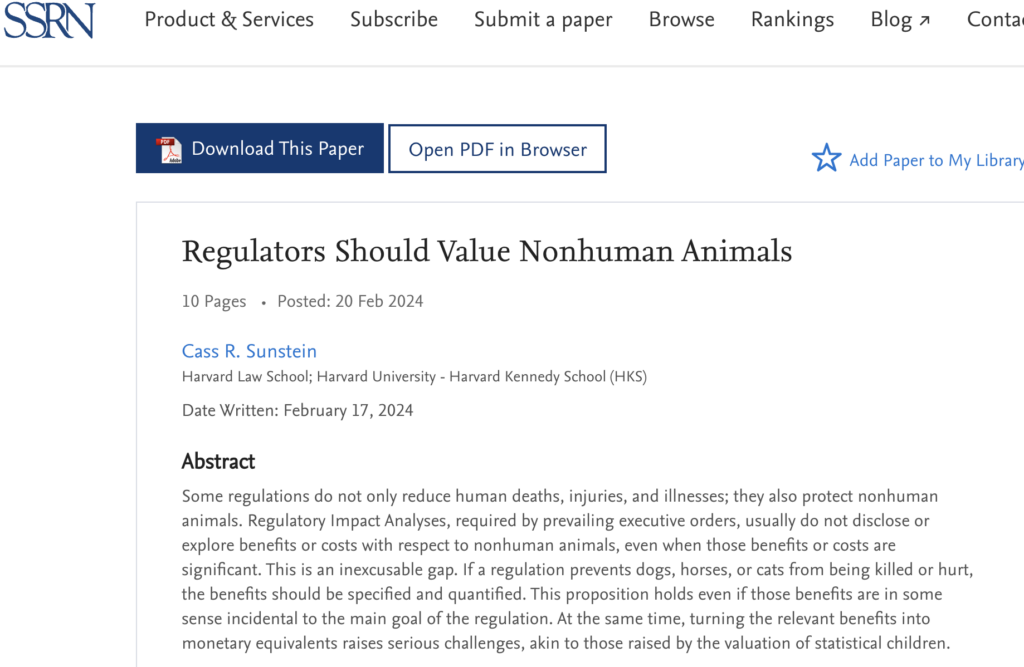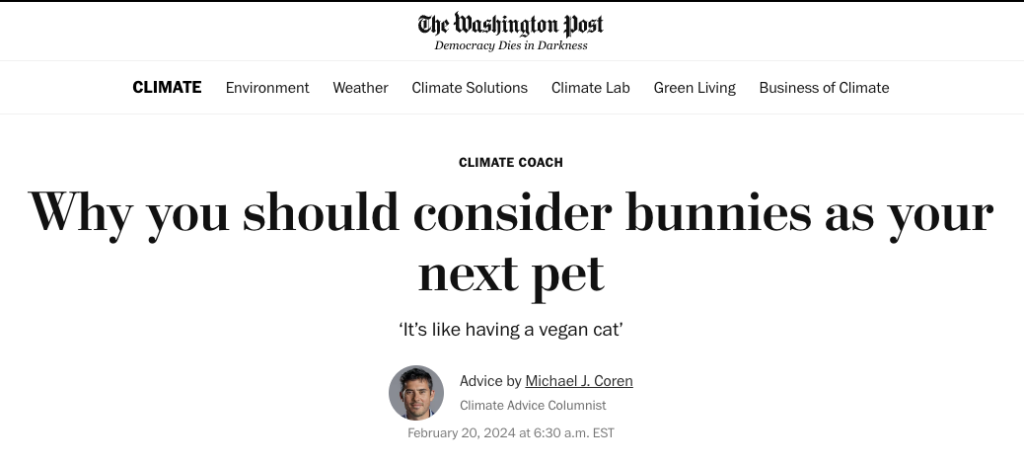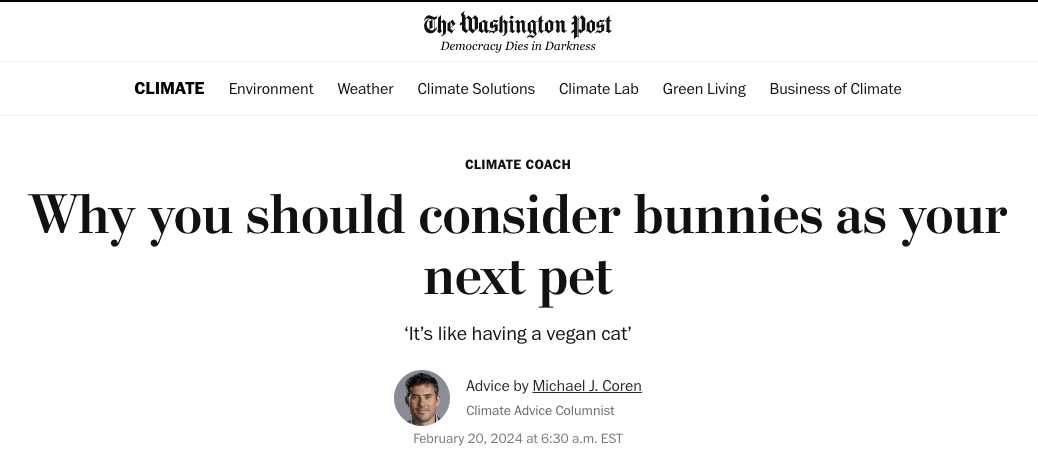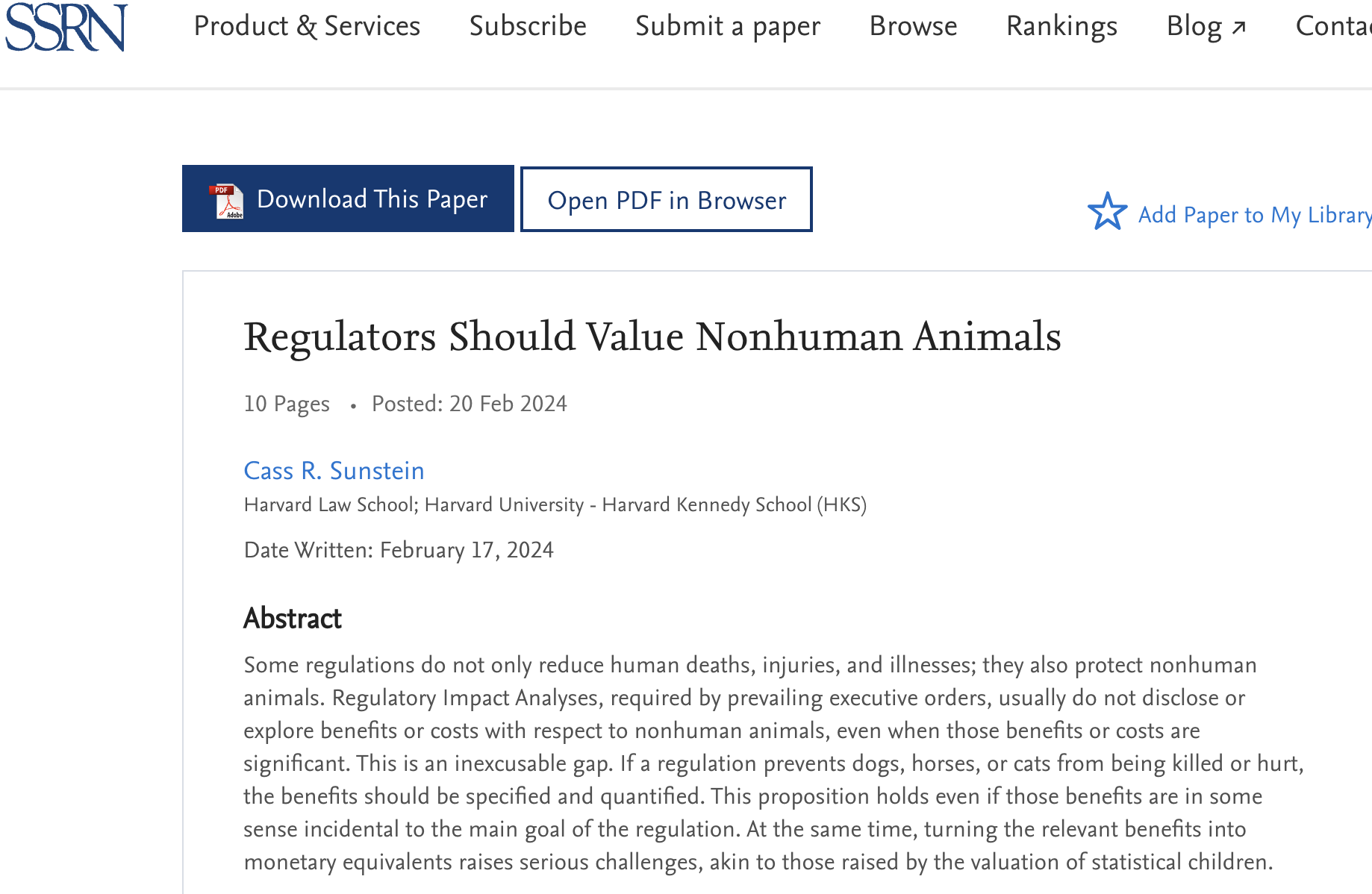New Paper: ‘Regulators Should Value Nonhuman Animals’ – Seeks ‘to estimate the number of dog-years saved by a regulation’

Excerpt: “If a regulation prevents dogs, horses, or cats from being killed or hurt, the benefits should be specified and quantified. .. .Outside of federal rulemaking, an academic study finds that a Value of a Statistical Dog Life is $10,000. If the goal is to come up with some number, it would be an advance to use that one, perhaps as a plausible lower bound. But there is a natural objection. Is the life of a dog plausibly 1/1,000 that of the life of a person? … At a minimum, agencies should attempt to quantify benefits and costs to nonhuman animals even if they cannot monetize them. With the help of contingent valuation studies, they should also attempt to monetize those harms.”
‘It’s like having a vegan cat’ – Wash Post: ‘Why you should consider bunnies as your next pet’ – Rabbits have ‘minimal pawprint’ while ‘cats & dogs have an outsize carbon footprint’

WaPo’s ‘Climate Advice Columnist’ – February 20, 2024:


Rabbits, by contrast, leave a minimal pawprint. They eat small amounts of hay and otherwise discarded vegetables. Their waste can be used as fertilizer in gardens. … In contrast, most cat and dog kibble is roughly 50 percent animal protein, accounting for around 1.5 percent of global agricultural emissions, according to a 2020 study in Global Environmental Change.

